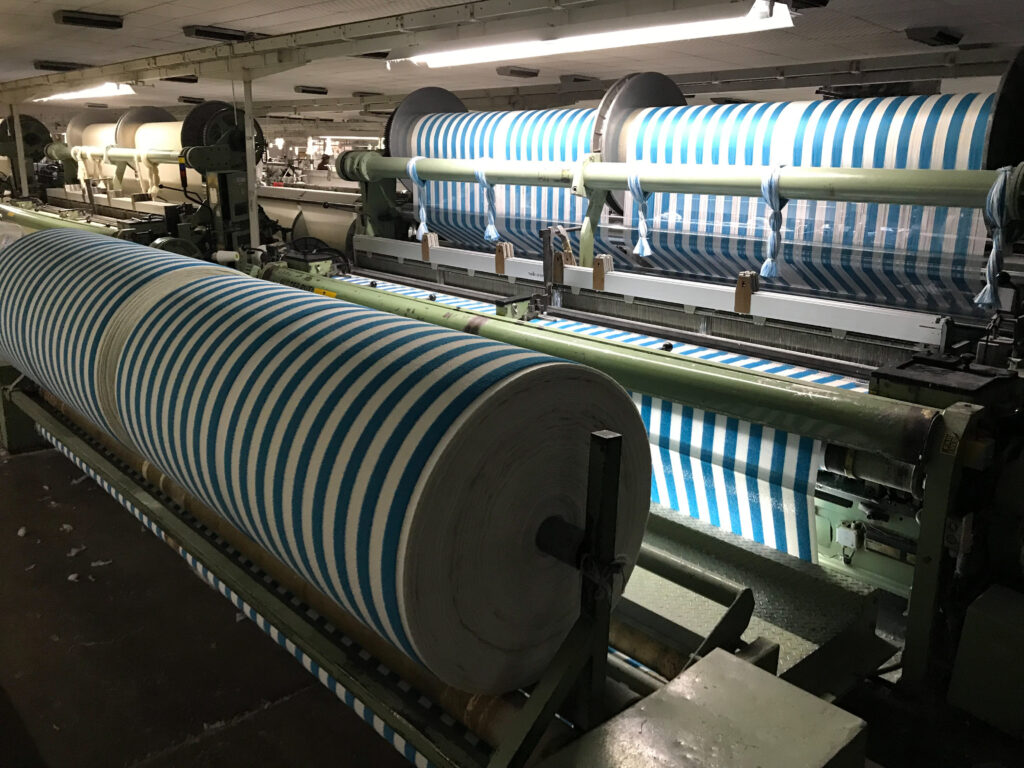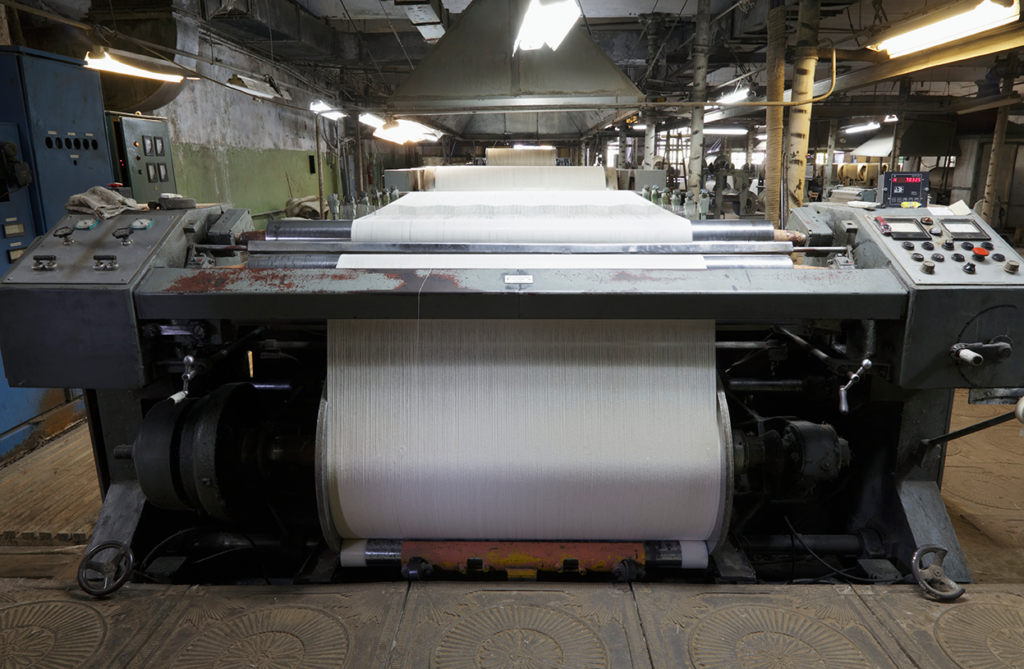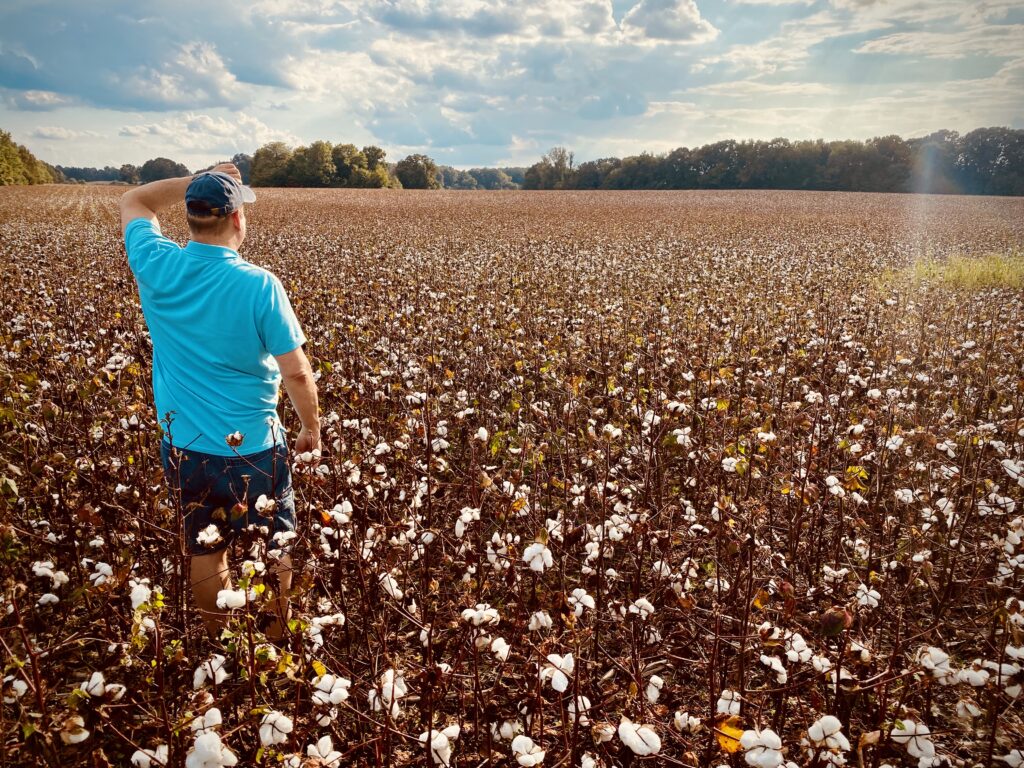How is a towel made? For a quick and dirty lesson on this process below are the 6 basic steps. If you want to delve into the technical aspects keep reading.
- Cotton Harvesting: The first step in making a towel is to harvest cotton, which is usually done by picking the cotton bolls from the plant by hand or with a machine.
- Spinning: Once the cotton is harvested, it is cleaned and then spun into yarn. This can be done using a spinning machine, which twists the fibers together to create a strong, durable yarn.
- Weaving: After spinning, the yarn is woven into fabric using a loom. The weaving process creates the characteristic looped pile that gives towels their absorbent texture.
- Bleaching and Dyeing: Once the fabric has been woven, it is often bleached and dyed to give it a uniform color. The fabric can be dyed in a variety of colors depending on the desired end product.
- Cutting and Sewing: After the fabric has been bleached and dyed, it is cut into the desired size and shape for towels. The edges are usually hemmed to prevent fraying.
- Finishing: Finally, the towels are finished by washing and drying them to remove any remaining impurities and to fluff up the fibers in the pile. The towels are then inspected for quality control and packaged for shipment.
To get further into detail, we can look into the spinning and weaving.
Cotton fibers are typically spun into yarn using a process called ring spinning. Here are the steps involved:
- Opening and cleaning the cotton fibers: The first step in spinning cotton into yarn is to open and clean the fibers. The cotton fibers are typically compressed into bales and transported to a textile mill, where they are opened using a picker machine. The picker machine removes any dirt, debris, or other impurities from the cotton fibers.
- Carding the fibers: Once the cotton fibers have been opened and cleaned, they are carded. Carding involves passing the fibers through a series of metal rollers with wire teeth. The rollers straighten and align the fibers, producing a long, thin web of cotton fibers called a sliver.
- Drawing the fibers: The next step is to draw the sliver into a finer strand of cotton fibers. This involves passing the sliver through a series of rollers that stretch and twist the fibers together.
- Spinning the yarn: The final step is to spin the cotton fibers into yarn. This is done using a ring spinning machine, which pulls the fibers out of the drawing frame and twists them together to form a continuous strand of yarn. The yarn is wound onto a bobbin, ready to be used in the weaving or knitting process.
Overall, spinning cotton into yarn involves a series of mechanical processes designed to open, clean, and prepare the cotton fibers before spinning them into a continuous strand of yarn. The resulting yarn can be used to make a wide range of textiles, including towels, clothing, and bedding.
Towels are typically woven using a loom, which is a machine designed to interlace two sets of threads at right angles to create a fabric. Here is a general overview of how towels are woven:
- Setting up the warp: The first step in weaving a towel is to set up the warp. The warp is the set of threads that run lengthwise through the fabric. The warp threads are wound onto a beam at the back of the loom and threaded through the heddles and reed of the loom.
- Threading the heddles: The heddles are small metal or plastic devices that are attached to a harness. The warp threads are threaded through the heddles, which allows the weaver to raise and lower them in a specific pattern.
- Setting up the weft: The weft is the set of threads that run horizontally through the fabric. The weft is wound onto a shuttle or bobbin and placed in the shuttle race of the loom.
- Weaving the towel: To weave the towel, the weaver uses a foot pedal or a hand lever to raise and lower the heddles in a specific pattern. This creates a shed, or opening, in the warp threads. The weaver then passes the shuttle through the shed, carrying the weft thread with it. The weaver repeats this process, alternating between raising and lowering the heddles and passing the shuttle through the shed, until the towel is woven to the desired length.
- Finishing the towel: After the towel is woven, it is typically cut from the loom and undergoes a finishing process. This may involve washing and drying the towel to remove any sizing or residue, as well as brushing or napping the fabric to create a soft, fluffy texture.
Overall, weaving a towel involves interlacing the warp and weft threads on a loom using a specific pattern to create a durable and absorbent fabric.
The basics of towel making do not change from country to country. All italian restaurants may have pizza on the menu, but the quality of the ingredients and the knowledge of the chef can produce varying results. The same can be said for towel making, the end results depends on the quality of the ingredients and the knowledge of the textile engineers, weave masters and entire team involved in all facets of production.



